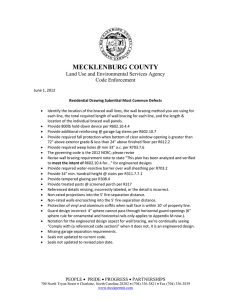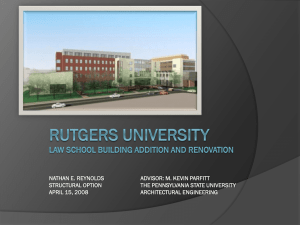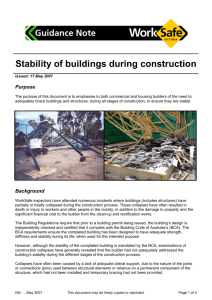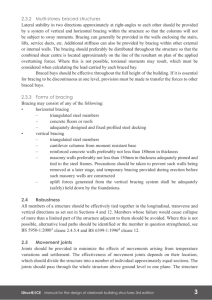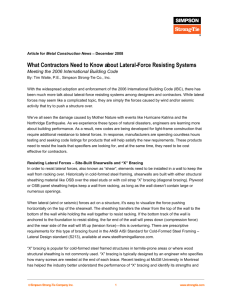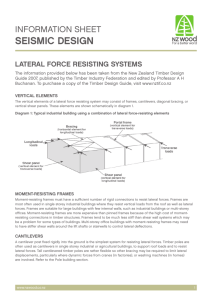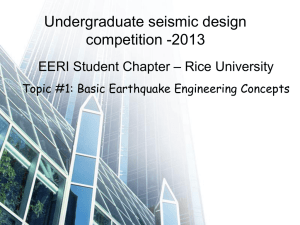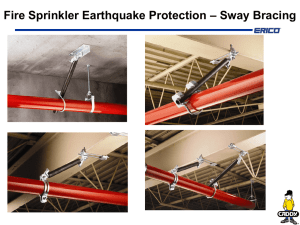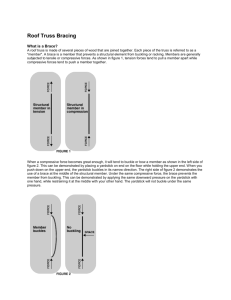High-Rise Building Stability Systems: Case Studies
advertisement
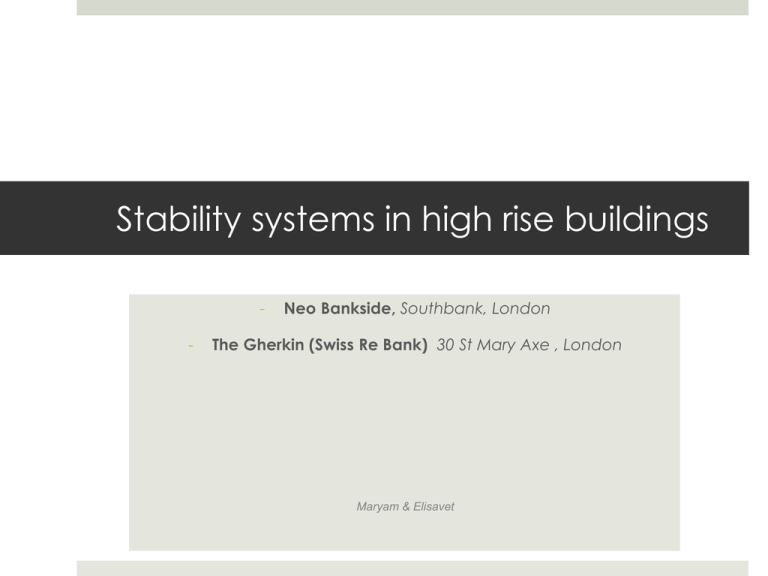
Stability systems in high rise buildings - Neo Bankside, Southbank, London The Gherkin (Swiss Re Bank) 30 St Mary Axe , London Maryam & Elisavet Vertical Elements Bracing Bracing consists of diagonal elements and acts in a similar way to a cantilevering vertical truss, from the ground up. It is for this reason that bracing should be present at every level of the structure down to the foundations. In order for it to be effective bracing needs to be continuous. If bracing is discontinuous, significant lateral forces are generated and need to be transferred from one bracing system to another, which can exert high localized lateral loads onto elements of structure. Additionally, the transfer system that is adopted for this purpose needs to have adequate stiffness. It is not uncommon to see bracing working in conjunction with other vertical elements to achieve overall lateral stability of a structure. Vertical Elements Shear Cores Shear cores and walls are vertical elements within a structure that provide lateral stability. The rest of the structure is framed around them and they typically work in conjunction with floor plates and roofs. They can also be paired with braced based systems. Shear cores typically act as vertical access throughout the structure via lifts and stairs and are usually located in line with the centroid of the structure. HORIZONTAL ELEMENTS Diaphragms A diaphragm is an area of the structure that provides bracing in its plane . Typically these are floor slabs and roof cladding, but can also be in vertical cladding elements. If cladding is used as a diaphragm then careful consideration must be givento the temporary condition of the structure during erection. This is also true for the maintenance of the structure if the cladding has a shorter design life than the structure. There are instances where diaphragms do not have enough strength to resist the lateral loads that can build up within them. In such cases, either the diaphragm is strengthened or horizontal bracing is installed to either supplement or replace the diaphragm completely. Case Study : Neo bankside What is it? Structural bracing on the exterior of the building. Role of the element in its environment/structure? to provide lateral and overall stability; to reduce the requirement for shear walls allowing greater internal flexibility and to provide lateral stability under wind load making up 75% of the overall stability. How is your “element” supported / restrained? The bracing is joined at every third floor by pinning nodes transferring the lateral forces applied to the structural frame by wind loads onto the cladding and into the bracing System/element behaviour: In structural terms, how does it work to fulfil its role? Stability forces are transferred into the external perimeter bracing via nodes, which are arranged on a six storey interval vertically and on a sequenced interval horizontally. Key Features Length/Span/Height , section shape (profile, depth, width, diameter, thickness), 400mm x 200mm Grey oval hollow sections. Tension Compression CASE STUDY: SWISS RE- THE GHERKIN What is it? Structural bracing on the exterior of the building Iin the form of a diagrid. Role of the element in its environment/structure? Resists lateral wind loading and so allows for a lighter , more open core that affords planning flexibility. How is your “element” supported / restrained? The use of steel nodes to connect bracing then attached to the ground and curtain wall that clads the diagrid. its role? Stability forces are transferred into the external perimeter bracing via nodes and to with stand wind loads. Tension Compression Precoated aluminum panels encase the diagrid to mask and fireproof the steel. Comparison The Neo bankside uses a single bracing whereas the Gherkin uses a double interlocking bracing system One assumes The Gherkin is able to with stand a greater wind load as due to its curing shaping with the diagrid.
